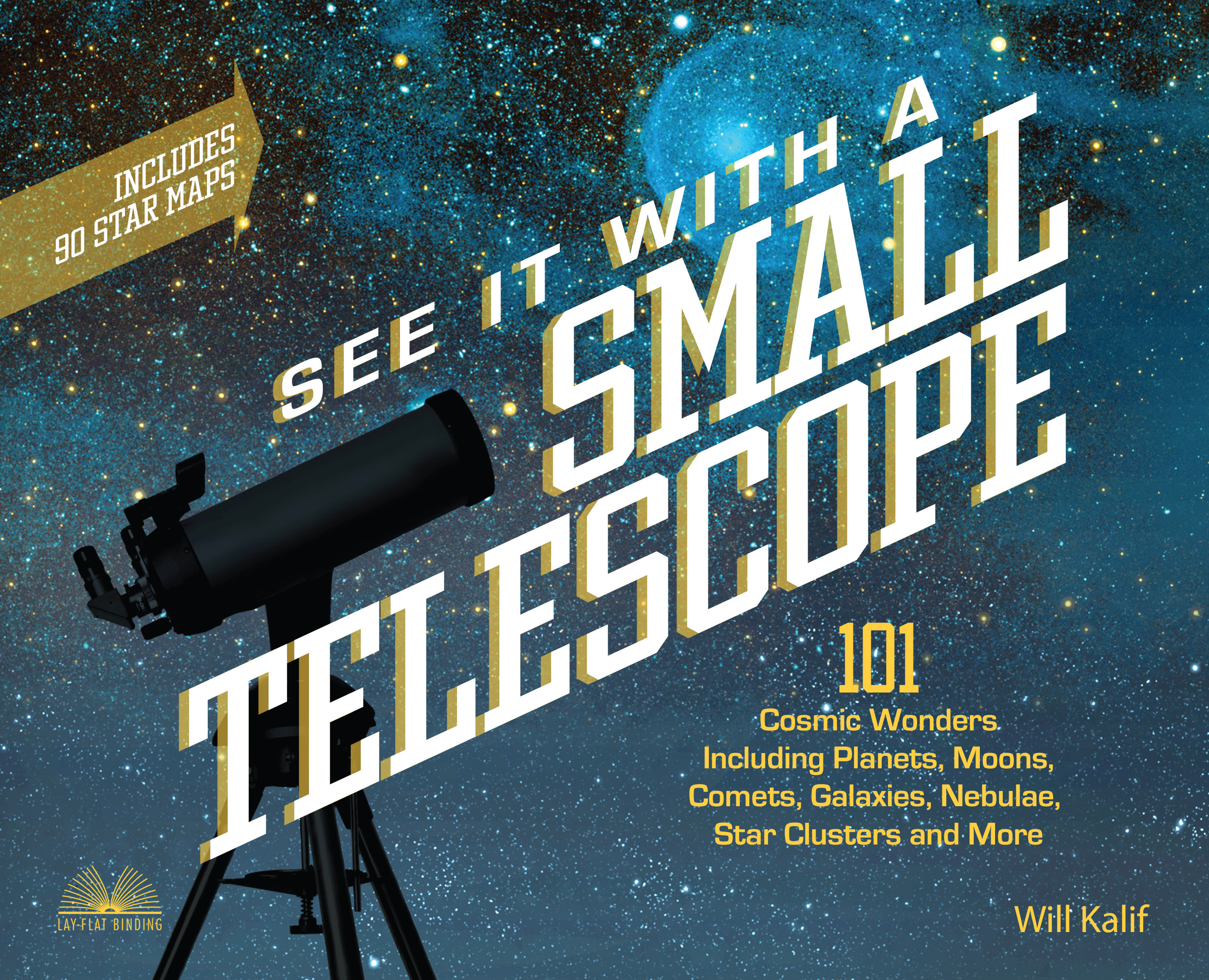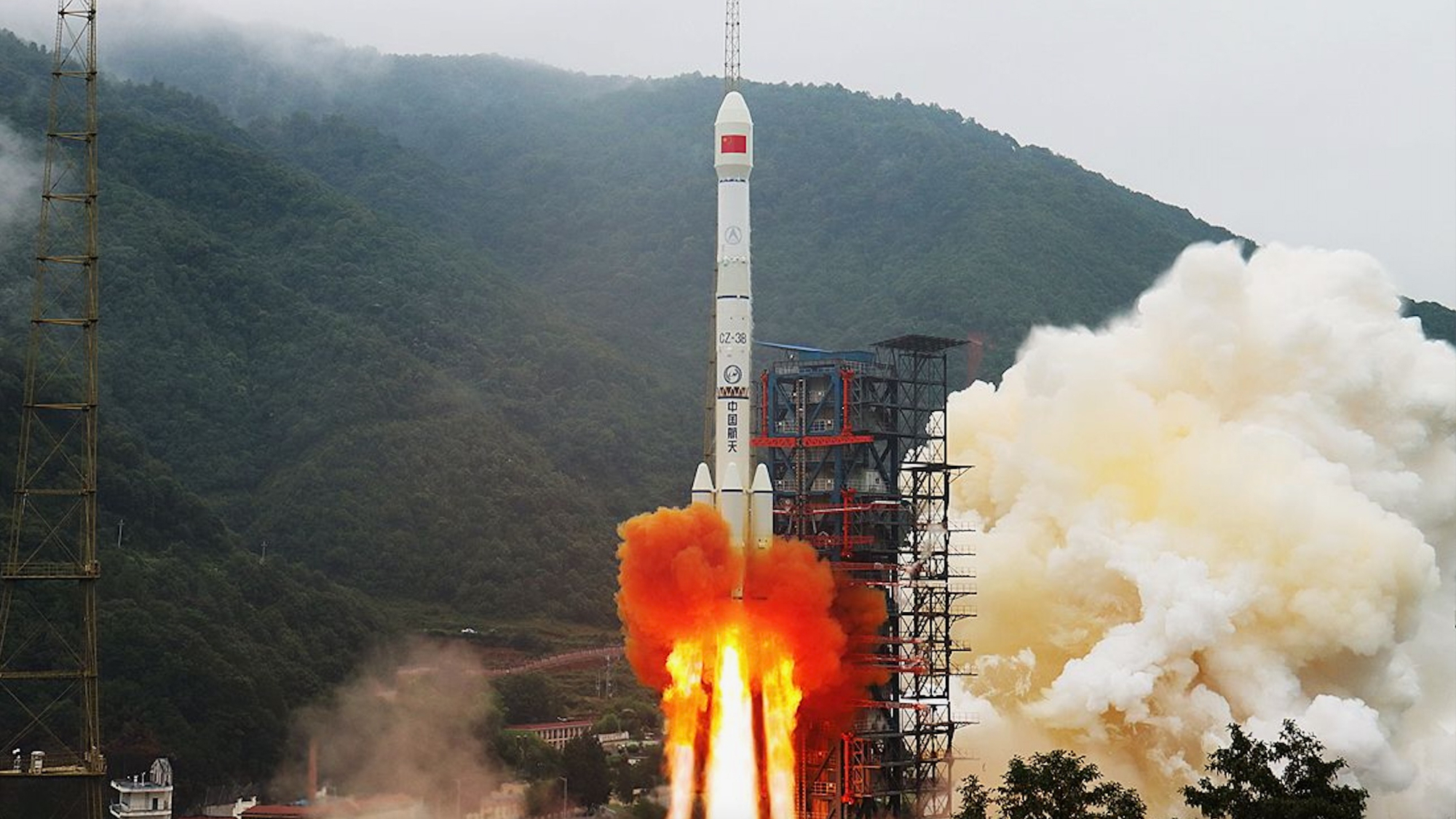Learn to View the Night Sky with 'See It with a Small Telescope'

Many of us just got our first telescope over the holidays, and let's face it — a telescope can be intimidating. It's a machine. It needs to be cleaned, properly aligned and calibrated. Even when you get it all set up, how do you decide where to point it first, with the whole night sky to explore?
If you find yourself in this predicament, you'll want to check out the new book "See It with a Small Telescope" (Ulysses Press, 2017), by Will Kalif. It's an observation guide, mentor and historical tour all in one. The book lists dozens of objects you can find with a small telescope and provides handy star maps to reach each one.
Kalif starts his book with a quick guide to star catalogs and encouragement for readers who may be feeling intimidated by their new celestial tool. Kalif, who runs the website "The Telescope Nerd," points out that he's been observing the sky for decades. , so he urges readers to give themselves a few nights to get comfortable with their new telescope. [Read an excerpt from "See It with a Small Telescope"]
"Once you identify your first few constellations and learn the names of some of the brighter stars, you will quickly get a knack for it, and in no time you will easily recognize many more constellations," Kalif wrote. "From there, you will be able to star hop from one amazing celestial object to another."
Near the beginning of the book is a nice list of easy objects to start with: the moon, Jupiter, Saturn, and the bright night-sky objects M13, M42 and M31 (nebulas, galaxies and star clusters cataloged by Charles Messier during the 1770s). It's really useful; I used a 4-inch amateur telescope for a little while in high school, and from that experience, I would recommend that readers start out with simple finds such as these, to build confidence. You can search for more-elusive objects when you have more experience.
Exploring the sky
While you can use this book without previous knowledge of the night sky, it probably would be easier to use after you understand where the constellations are located. If you get a little lost, print out a star chart from an online source such as Stellarium.org, which Kalif recommends, and bring it outside with you on your first few nights. If you're into planet hunting, you'll also need to know where the planets are located right now, which you can easily find on websites such as Sky & Telescope (as well as Space.com).
Let's assume, however, that you know the basic constellations, the bright stars and the locations of the planets. Kalif organizes his book into sections according to what kinds of objects you want to observe — for example, the moon, planets, star clusters, galaxies or nebulas. He picks out common examples of each, shows a star chart of where the object is located, tells you how easy it is to find and gives a brief description of the object.
Breaking space news, the latest updates on rocket launches, skywatching events and more!
For example, I randomly chose Omicron Cygni, a triple-star system. Kalif explains what constellation it is found in (Cygnus), how bright each star is, where the stars are located using celestial coordinates, and when it is best to see them. He describes Omicron Cygni, in part, as "a beautiful triplet of stars, each with a different color" and ranks it as "medium difficulty" to find. A star chart on the next page guides readers to Omicron Cygni, using the stars of the Summer Triangle.
The star charts, by the way, are most useful when you're using the finder scope on your telescope to figure out where the object is. If you're looking for a more detailed "zoom in" kind of a chart, it's best to find a guide more suited to advanced amateur astronomers or to get higher-resolution charts online. (Sky & Telescope's Pocket Sky Atlas is an example book, while you can get online star maps from locations such as http://www.skymaponline.net/)
Eclipses and astrophotography
My biggest concern about the book was how it treated solar and lunar eclipses. While the book listed future eclipses and gave a basic overview of how they work, it didn't include information about safety during solar eclipses. This knowledge will be especially important for skywatchers in the United States (the book's target market) in the coming years, because a total solar eclipse will cross part of the country in 2024. [Total Solar Eclipse of 2024: Here Are Maps of the 'Path of Totality']
I particularly enjoyed the section on astrophotography because Kalif was careful not to mention any individual software — that stuff gets outdated really quickly — and instead focused on techniques to get the most out of your telescope. (I loved his tip to cover your camera with a black hat while clicking the shutter, to avoid that horrible wobble that shows up in long exposures.)
By the way, while this book is not aimed specifically at kids, it's written very simply, at about the junior high level. So you can definitely give it to a motivated junior high or early high school student, although parents may want to help with some of the more complicated observational procedures.
"See It with a Small Telescope" is a fun way to whet your appetite for telescope observations. By the time you work through the list of objects in the book, you should be confident enough to pick up a more advanced telescopic guide if you like. Or, you can keep visiting the same objects again and again to better appreciate how awesome they look. Happy hunting!
Follow us @Spacedotcom, Facebook and Google+. Original article on Space.com.
Join our Space Forums to keep talking space on the latest missions, night sky and more! And if you have a news tip, correction or comment, let us know at: community@space.com.

Elizabeth Howell (she/her), Ph.D., was a staff writer in the spaceflight channel between 2022 and 2024 specializing in Canadian space news. She was contributing writer for Space.com for 10 years from 2012 to 2024. Elizabeth's reporting includes multiple exclusives with the White House, leading world coverage about a lost-and-found space tomato on the International Space Station, witnessing five human spaceflight launches on two continents, flying parabolic, working inside a spacesuit, and participating in a simulated Mars mission. Her latest book, "Why Am I Taller?" (ECW Press, 2022) is co-written with astronaut Dave Williams.
